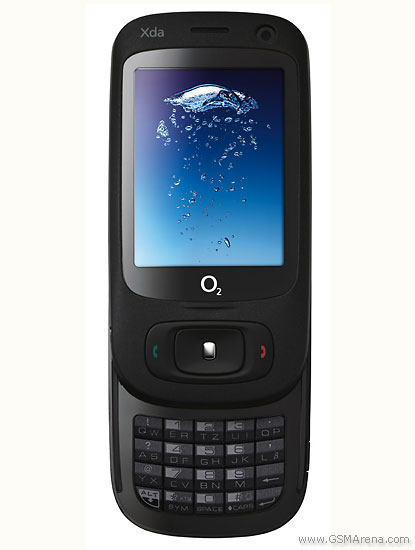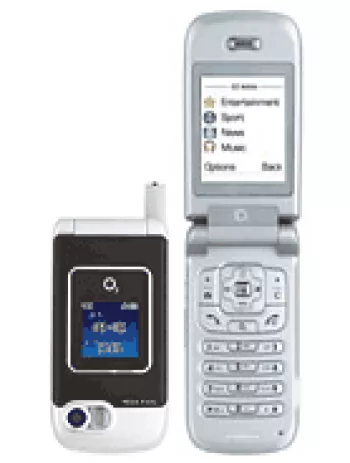
Introduction to O2 XDA Star
The O2 XDA Star was an innovative device introduced to the market with several unique features for its time. Positioned as a smartphone, it catered primarily to business professionals who required a balance between connectivity, productivity, and usability. With a focus on compact design and powerful capabilities, it set a precedent for many future smartphone models.
Network Capabilities
The O2 XDA Star supported a range of network technologies which was typical for smartphones during its release period. It operated on GSM bands (850/900/1800/1900) and supported 3G HSDPA 2100 bands, offering better connectivity options in various regions. Although the speed of HSPA 3.6/0.384 Mbps might seem modest by today's standards, at the time, it provided sufficient speeds for mobile web browsing and basic online tasks.
Launch and Availability
The O2 XDA Star was announced in October 2007. However, despite its announcement and the anticipation it generated, the device was canceled before it could hit the shelves. This decision can be attributed to several factors, including market competition and potential strategic shifts by the manufacturers.
Design and Build
The dimensions of the O2 XDA Star measured 107 x 55 x 15.8 mm, and it weighed 120 g, making it relatively compact and portable. The device featured a half-QWERTY keyboard, accommodating users who were familiar with traditional texting and needed faster input methods for emails and messages. The use of a mini-SIM also reflected common standards of the time, allowing users to switch devices conveniently.
Display Characteristics
The device sported a 2.6-inch TFT resistive touchscreen with 65K colors, a resolution of 240 x 320 pixels, and a 4:3 aspect ratio. With a ~154 ppi density, the display provided adequate clarity for reading texts and viewing basic graphics. Its ~35.6% screen-to-body ratio also ensured a comfortable user experience without compromising on portability.
Hardware and Performance
Running on the Microsoft Windows Mobile 6.0 Professional OS, the O2 XDA Star was equipped with a Qualcomm MSM7200 chipset. It had a 400 MHz ARM 11 CPU and an Adreno 130 GPU. These components might appear underpowered now, but they were capable of handling several productivity applications and the limited multitasking expected at the time.
Memory Specifications
When it came to memory, the O2 XDA Star housed 96MB of RAM and 128MB of ROM, with the option to expand storage via a microSD slot. Although modest in today's standards, this storage capacity was typically sufficient for contact storage, emails, and basic applications in the Windows Mobile ecosystem.
Camera Features
The main camera featured a single 2 MP lens capable of capturing basic photographs and videos. Additionally, it had a CIF front-facing camera for video calls, reflecting the beginnings of video communication on mobile devices. While photographic capabilities weren't the main selling point, they served the essential needs of users who required occasional photographs.
Audio and Sound Quality
Audio features included a loudspeaker and various alert types, such as vibration and downloadable polyphonic or MP3 ringtones, providing users with customization options for notifications. However, it lacked a 3.5mm headphone jack, which was a notable omission for users accustomed to wired audio accessories.
Connectivity Options
The O2 XDA Star offered basic connectivity options, such as Bluetooth 2.0 for wireless data exchange and a miniUSB port for wired connections. However, it did not include WLAN, positioning features, or a radio, which were constraints for users seeking advanced wireless capabilities.
Battery Life
Powered by a removable Li-Ion 1120 mAh battery, the O2 XDA Star could achieve up to 250 hours of standby time and up to 5 hours of talk time. This endurance was suited for professionals requiring dependable battery life throughout the day, hence supporting the phone’s appeal to its target consumer segment.
Conclusion
Overall, the O2 XDA Star represented a blend of compact design and functional capabilities during its time. Despite being canceled before release, its anticipated features and the attention it received highlighted the ongoing technological evolution in mobile communications. Although modern devices have eclipsed its specifications, the O2 XDA Star remains an interesting reference point in the history of smartphone development.
Key Features of O2 XDA Star
- Network: GSM / HSPA and support for 2G and 3G bands.
- Display: 2.6 inches TFT resistive touchscreen with 65K colors.
- Operating System: Microsoft Windows Mobile 6.0 Professional.
- Processor: 400 MHz ARM 11 with Adreno 130 GPU.
- Memory: Expandable via microSD card, 96MB RAM, and 128MB ROM.
- Main Camera: 2 MP with video recording capability.
- Selfie Camera: CIF videocall camera available.
- Connectivity: Bluetooth 2.0 and miniUSB support.
- Battery: Removable Li-Ion 1120 mAh battery with up to 250 hours standby time and up to 5 hours talk time.
- Additional Features: Half-QWERTY keyboard and downloadable polyphonic, MP3 ringtones.
Key Disadvantages of O2 XDA Star
- Device status is Cancelled; it was announced in October 2007 but never launched.
- Uses outdated Microsoft Windows Mobile 6.0 Professional OS.
- Limited RAM and ROM storage with only 96MB RAM and 128MB ROM.
- Small screen size of 2.6 inches with low resolution and pixel density (~154 ppi).
- The display uses a resistive touchscreen, which is less responsive than capacitive touchscreens.
- No 3.5mm headphone jack, limiting audio connectivity options.
- No built-in WLAN or Wi-Fi support, limiting internet connectivity.
- No GPS or positioning features available.
- No built-in FM radio functionality.
- Slow internet speeds with HSPA 3.6/0.384 Mbps.
- Limited camera capabilities with only a 2 MP rear camera and CIF video call camera.
- Thick form factor at 15.8 mm and relatively heavy for its features at 120 g.
- No advanced sensors or features, which are common in modern smartphones.

View Also
More Phones
All Rights Reserved +13665 Phones © Mobilawy 2025

























